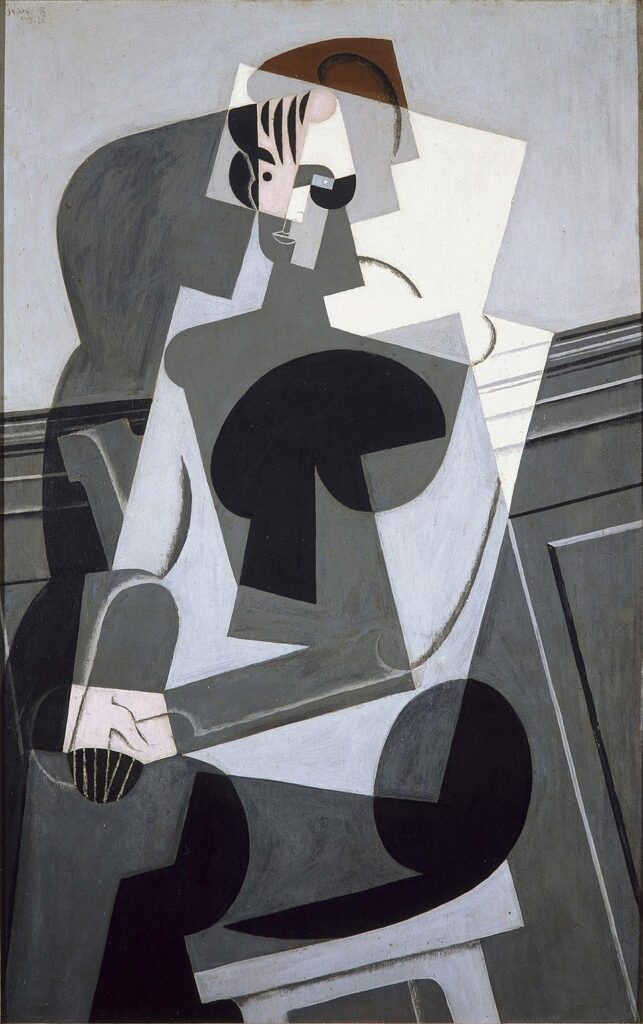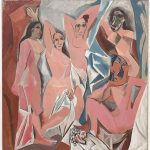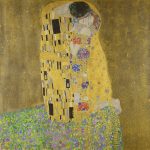
Juan Gris, born José Victoriano González-Pérez, was a Spanish painter and sculptor who played a crucial role in the Cubist movement. His works are characterized by their clarity and use of geometric forms, standing out even among his peers like Pablo Picasso and Georges Braque. But behind this influential artist stood a significant figure: his wife, Josette Gris. Josette was more than just a partner; she was his muse, his confidante, and a pivotal influence on his work. This article explores the intricate relationship between Juan and Josette Gris, delving into how their partnership shaped the art world.
The Early Life of Juan Gris
Juan Gris was born on March 23, 1887, in Madrid, Spain. His early life was steeped in the rich cultural traditions of his homeland, which laid the foundation for his artistic pursuits. Gris initially studied engineering at the Madrid School of Arts and Sciences, but his passion for art soon took over. By 1906, he had moved to Paris, the epicenter of the avant-garde movement, to fully immerse himself in the burgeoning art scene.
In Paris, Gris encountered influential artists like Pablo Picasso and Georges Braque, who were pioneering Cubism. The environment in Paris was intellectually stimulating and artistically liberating, offering Gris the perfect setting to develop his unique style. His early works displayed a clear inclination towards Cubism, but with a distinct clarity and precision that set him apart from his contemporaries.
Gris’s work during this period was heavily influenced by the technological and industrial advancements of the time. His paintings often depicted modern objects like newspapers, bottles, and musical instruments, rendered in geometric shapes and interlocking planes. This approach not only showcased his technical skill but also his innovative thinking, making him a prominent figure in the Cubist movement.
Despite the challenges of being a foreign artist in Paris, Gris quickly established himself within the artistic community. His friendships with leading artists and intellectuals provided him with the support and inspiration needed to push the boundaries of his art. This period of growth and experimentation was crucial in shaping Gris’s future works and his enduring legacy in the art world.
The Meeting of Juan and Josette
Josette Gris, born Josette Deroubaix, entered Juan’s life at a critical juncture. They met in the early 1920s, a period marked by significant personal and professional challenges for Gris. At the time, Gris was struggling with health issues and the loss of his first wife, Lucie Belin, which had left a profound impact on him. Josette, with her charm, intelligence, and unwavering support, brought a renewed sense of purpose and stability to his life.
Their meeting was serendipitous, yet it marked the beginning of a deep and transformative partnership. Josette quickly became an integral part of Gris’s life, providing him with emotional support and creative inspiration. Her influence on his work was profound, as she encouraged him to explore new themes and techniques, ultimately helping him to refine his unique style.
Josette’s background in literature and her understanding of art made her an ideal companion for Gris. She was not only his wife but also his intellectual equal, engaging in deep conversations about art, philosophy, and life. This intellectual partnership enriched Gris’s creative process, leading to some of his most celebrated works.
Their relationship was also marked by a shared sense of adventure and a love for travel. The couple frequently traveled together, drawing inspiration from the diverse cultures and landscapes they encountered. These experiences not only strengthened their bond but also infused Gris’s work with a richness and diversity that set it apart from his earlier pieces.
Josette’s Role as Muse
In the world of art, the concept of the muse has always held a special place. For Juan Gris, Josette was the embodiment of this ideal. She was not merely a passive subject; she actively engaged with his work, offering insights and critiques that helped shape his artistic vision. Her presence in his life was a constant source of inspiration, driving him to create some of his most iconic pieces.
Josette’s influence is evident in the way Gris depicted women in his paintings. Unlike the fragmented and abstract figures typical of Cubism, his portrayals of Josette were more intimate and detailed. These works reflect a deep emotional connection and a genuine admiration for her beauty and spirit. Her features, often stylized yet recognizable, became a recurring motif in his art, symbolizing his love and appreciation for her.
One of the most notable examples of Josette’s influence is the painting “Woman with Mandolin.” This piece, with its harmonious composition and gentle color palette, showcases Gris’s ability to blend Cubist techniques with a sense of warmth and tenderness. The figure of the woman, believed to be inspired by Josette, is rendered with a level of detail and care that highlights her importance in his life.
Josette’s role as a muse extended beyond visual representation. Her literary background and keen understanding of art allowed her to contribute to Gris’s creative process in meaningful ways. She often helped him conceptualize ideas, offering fresh perspectives that enriched his work. This collaborative dynamic not only strengthened their bond but also pushed Gris to explore new artistic avenues.
The Artistic Collaboration
The collaboration between Juan and Josette Gris went beyond the traditional artist-muse relationship. Their partnership was marked by a deep mutual respect and a shared vision for the future of art. This collaborative spirit was evident in their everyday interactions, as they constantly bounced ideas off each other and worked together to overcome creative blocks.
Josette played a crucial role in managing the practical aspects of Gris’s career. She handled correspondence, organized exhibitions, and dealt with collectors, allowing Gris to focus on his art. Her support was instrumental in ensuring that his work reached a wider audience, cementing his place in the art world. This behind-the-scenes work was critical in establishing and maintaining Gris’s reputation as a leading figure in Cubism.
Their home became a vibrant hub of artistic activity, frequented by notable artists, writers, and intellectuals. This stimulating environment provided Gris with the inspiration and feedback needed to push the boundaries of his work. Josette’s presence in these interactions was not merely supportive; she actively engaged with their guests, contributing to the lively debates and discussions that shaped the artistic landscape of the time.
The synergy between Juan and Josette is perhaps best illustrated in their collaborative projects. One such project was the design of stage sets and costumes for Sergei Diaghilev’s Ballets Russes. Gris’s innovative designs, infused with Cubist elements, were brought to life with Josette’s meticulous attention to detail and organizational skills. This collaboration was a testament to their ability to seamlessly blend their talents, resulting in groundbreaking works that left a lasting impact on the world of art and theater.
The Impact on Gris’s Work
Josette’s influence on Juan Gris’s work cannot be overstated. Her presence in his life marked a period of significant artistic growth and innovation. Under her influence, Gris’s work evolved from strict Cubist compositions to more fluid and expressive forms. This evolution is evident in the way he began to incorporate elements of realism and naturalism into his Cubist framework.
One of the key changes in Gris’s work during this period was his use of color. Inspired by Josette’s love for vibrant hues, he began to experiment with a broader color palette, moving away from the muted tones typical of early Cubism. This shift brought a new level of dynamism and energy to his paintings, making them more visually engaging and emotionally resonant.
Gris also started to explore new themes and subjects, many of which were inspired by his life with Josette. Their travels, domestic life, and shared experiences became central motifs in his work. This personal dimension added depth and complexity to his art, allowing viewers to connect with it on a more intimate level. His works from this period are characterized by a sense of joy and tranquility, reflecting the happiness he found in his relationship with Josette.
Another significant development in Gris’s work was his exploration of different media. Encouraged by Josette, he ventured into sculpture and decorative arts, expanding his creative repertoire. These experiments not only showcased his versatility as an artist but also highlighted the collaborative nature of his relationship with Josette. Her support and encouragement were crucial in giving him the confidence to take these artistic risks and explore new frontiers.
The Final Years and Legacy
The later years of Juan Gris’s life were marked by both artistic triumphs and personal challenges. His health began to deteriorate, and he faced financial difficulties that added stress to his already demanding career. However, throughout these trials, Josette remained his steadfast support, providing him with the strength and encouragement needed to continue his work.
Despite these challenges, Gris’s final years were incredibly productive. He continued to push the boundaries of Cubism, creating works that were both innovative and deeply personal. His paintings from this period are characterized by a sense of maturity and refinement, reflecting his years of experience and his enduring passion for his art.
Josette’s unwavering support during these difficult times was instrumental in enabling Gris to maintain his creative output. She managed their household, dealt with financial matters, and took care of Gris during his bouts of illness. Her dedication and love provided him with the stability needed to continue his work, even in the face of adversity.
Juan Gris passed away on May 11, 1927, at the age of 40. His untimely death was a significant loss to the art world, but his legacy lives on through his groundbreaking contributions to Cubism. Josette’s role in preserving and promoting his work after his death was crucial in ensuring that his artistic achievements were recognized and celebrated. She dedicated herself to cataloging his works, organizing exhibitions, and keeping his memory alive, ensuring that future generations could appreciate his contributions to modern art.
Conclusion
The story of Juan and Josette Gris is a testament to the power of love, partnership, and artistic collaboration. Josette was more than just a muse; she was an integral part of Gris’s life and work, providing him with the inspiration and support needed to achieve greatness. Their relationship was marked by mutual respect, intellectual companionship, and a shared passion for art. Together, they navigated the challenges of life, leaving behind a legacy that continues to inspire and influence the world of art.
In understanding Juan Gris’s work, one cannot overlook the profound impact of Josette’s presence in his life. Her influence is woven into the fabric of his art, reflected in the vibrant colors, intricate compositions, and the emotional depth of his paintings. As we celebrate Gris’s contributions to Cubism, we must also acknowledge the pivotal role Josette played in his journey, reminding us that behind every great artist is often an equally remarkable partner.




